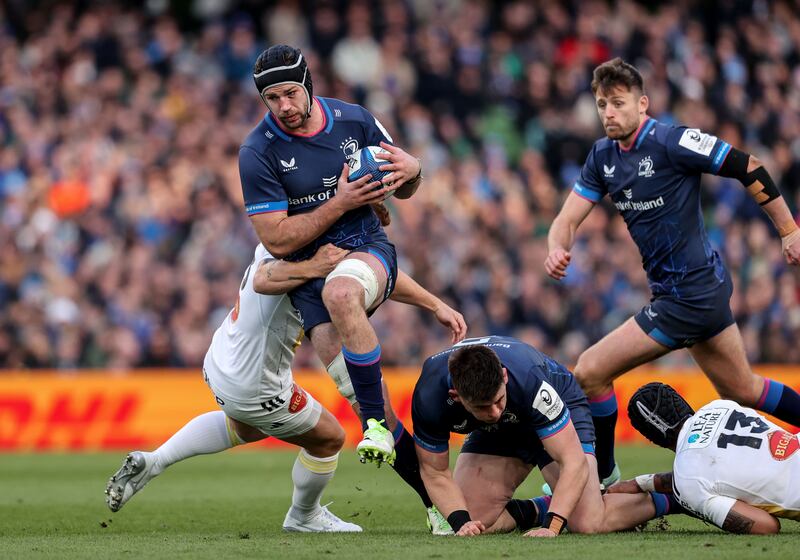As South Africa bulldozed their way to the Webb Ellis trophy last year in France, their approach had the rugby world talking about ‘bomb squads’ and 6-2 splits.
For the final against New Zealand they chose a 7-1 bench, meaning the plan was to bring on seven forwards during the second half of the match and risk having just one back, Willie le Roux, to cover all other eventualities.
That selection spurred former Wales backrow Alix Popham to comment in a tweet: “South Africa bring on seven huge mutants against tired players during games. I’m not having a go at @springboks – they are just playing within the rules – but I think substitutions should only be for injuries.”
As a campaigner for head injury safety, Popham’s word “mutant” seemed deliberately chosen with his eye on the prize – publicity.
READ MORE
But the Springboks are far from being alone. Ireland had six forwards on the bench against England in this year’s Six Nations championship, and last weekend Munster had a 6-2 split against the Bulls in South Africa. It has now become the norm to bring in forwards after half-time to play against tiring players as rugby moves even further away from an evasive running game to a power-based collision sport.

Does rugby need the 20-minute red card?
Backline players could ask what the future is for them if there is just one place on the bench and seven places for forwards. That describes a future for elite rugby in which matches may involve just 16 backs and 30 forwards between teams.
It also seems counterintuitive to what rugby is trying to achieve in terms of its injury profile. Flooding the zone with high-energy, massive bodies to dominate the contact points in an era where rule changes and technology are being used to counter the possibility of injury seems self-defeating.

For the rugby product – which is out there in the ever-growing entertainment world competing against soccer and Gaelic games and celebrity boxing matches, NFL and jazzed up golf – do fans want a player like Jordan Larmour or Kurt-Lee Arendse coming into the game, or do they want a 100kg or bigger secondrow coming on? Springbok lock, Eben Etzebeth, is almost 6ft 9ins and 119kg.
It’s easy to understand why coaches think the forward-loaded bench is worth the risk. And World Rugby can point to the World Cup quarter-final last year between France and South Africa, where both sides had 6-2 splits and the match was a spectacle.
But week in, week out the professional game is more an exercise in accountancy and accumulating points over eight months of grind than a throw-around beauty pageant that can keep people entertained for two hours.
It’s about strength, power and inches as opposed to dozens of yards and dancing feet. Sure, fans like the hits as much as the line breaks and will rise to the humiliation of a prop by a light-footed winger in a mismatch. But 30 forwards?
It is quite an easy fix for World Rugby if they, along with the other 6-2 and 7-1 sceptics, see it as something that needs fixing. It is not hard to change the substitution laws, which are a relatively recent thing anyway.

It was as recently as 1968 Australia put forward a motion to successfully change the laws that would permit two replacements per match but only after a medic had declared the starting player unfit to continue.
The first substitute used in international rugby was Ireland’s Mike Gibson who came on for Barry John in the British and Irish Lions’ first Test against South Africa in 1968, in Pretoria. The first substitution in the Five Nations was the following year, when the new law was invoked by Scotland who brought on scrumhalf Ian McCrae when Gordon Connell retired injured with torn ankle ligaments in the first half.
By the 1970s replacements were being used in all international matches. It was only in 1990 that three substitutes were permitted. That soon became four, then six and seven. Since 2009 eight players have been available.
Over 30 or 40 years the philosophy changed from the 15 players that started should finish, to over half the team being replaced. You’d guess it was driven by the nations that have depth in numbers, those that could field two Test sides if they wanted. Eight replacements mitigates against smaller, less well-resourced teams.
But the subject is less about rose-tinted spectacles and the laws of bygone years and more about the essence of rugby. It has changed and continues to change as we wait for a team to introduce eight replacement forwards.
Popham’s “mutants” has a derogatory ring to it and wrongly suggests Irish forwards like Caelan Doris or Ryan Baird are less athletes or evasive runners than centres Garry Ringrose or Robbie Henshaw. But the former Welsh forward also makes a valid point when it comes to injury prevention and the changing nature of the game.
- Listen and subscribe to our Counter Ruck rugby podcast
- Sign up for push alerts and have the best news, analysis and comment delivered directly to your phone
- Find The Irish Times on WhatsApp and stay up to date















